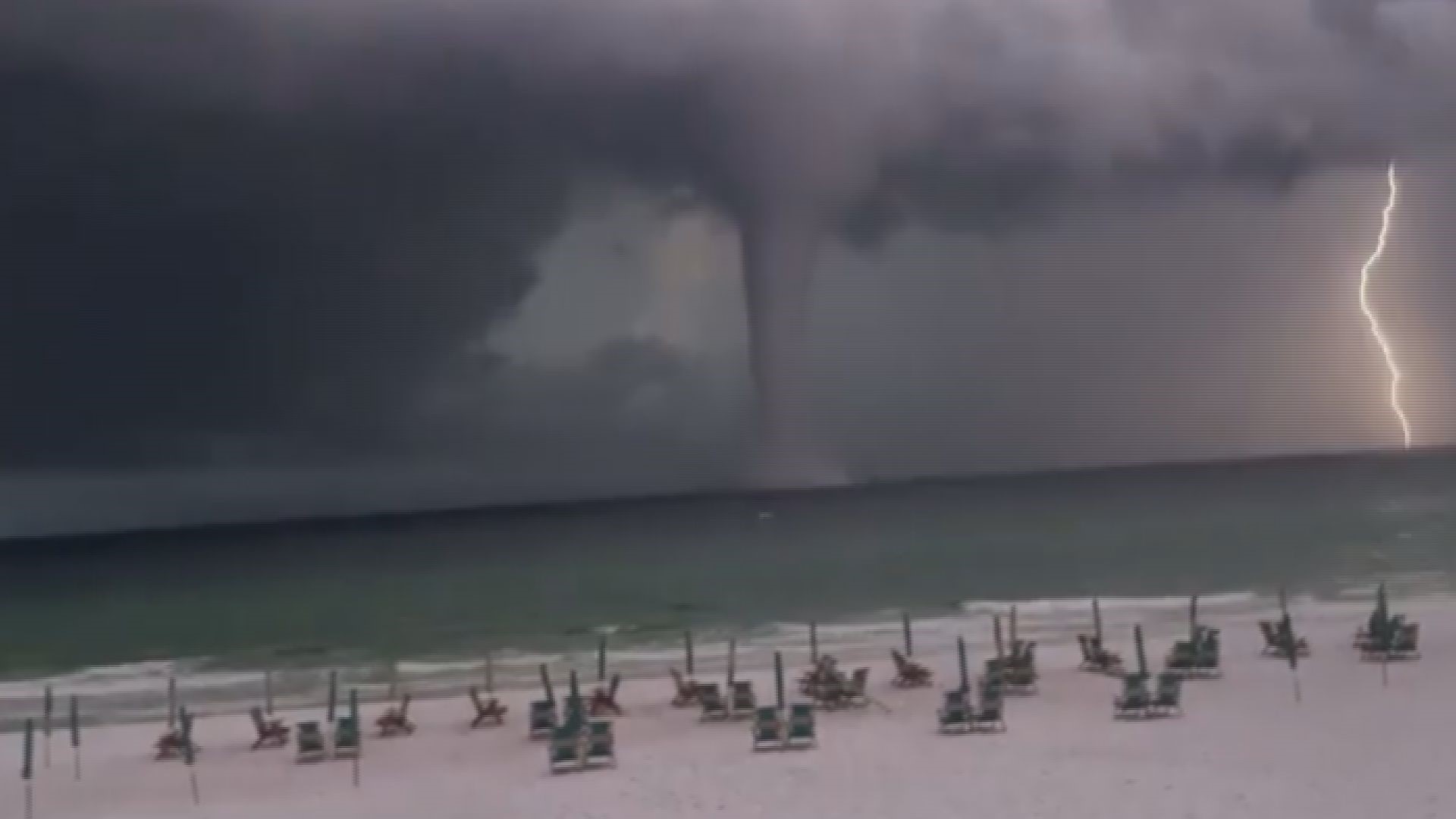MOLINE, Ill. — On Tuesday, Aug. 16, a viral video of a waterspout in Destin, Florida went viral. There were a handful of waterspouts observed around Destin and Henderson Beach State Park earlier that morning, which were seen moving away from the shore.
Although none of them made landfall, the National Weather Service issued a marine warning that lasted until the mid-morning.
What is a waterspout and how is it different from a tornado?
There are two types of waterspouts: fair-weather waterspouts and tornadic water spouts.
Fair-weather waterspouts form in developing cumulus clouds, although they aren't usually associated with thunderstorms. They occur in light wind conditions, so they don’t tend to move very far. They develop on the water's surface and grow upward to the base of the cloud. When these types of waterspouts are finally visible, they're already near maturity.
Tornadic waterspouts are tornadoes that form over the water and have the capability to move onto land. They develop below thunderstorms and descend from the clouds to the water.
If a waterspout makes landfall, the National Weather Service issues a tornado warning, since the storms are now able to cause damage. Fair-weather waterspouts tend to dissipate rapidly once they are onshore and barely travel any notable distance.
Waterspouts and tornadoes are similar because they both come from cumuliform clouds and feature a rapid rotation of air currents. They are both classified as tornadoes, with a waterspout being classified as a type of tornado.
Tornadic waterspouts are even more similar to tornadoes since they develop with severe thunderstorms and are accompanied by high winds, large hail and lightning.
The main difference between a waterspout and a tornado is that the former tends to be weaker. The force of air friction is weaker over water, so less air is available to be drawn into the storm's circulation.

